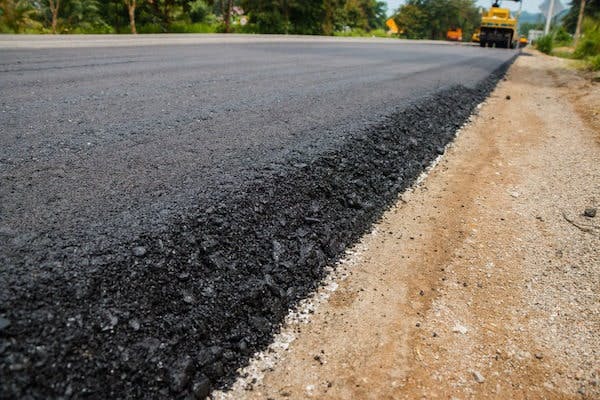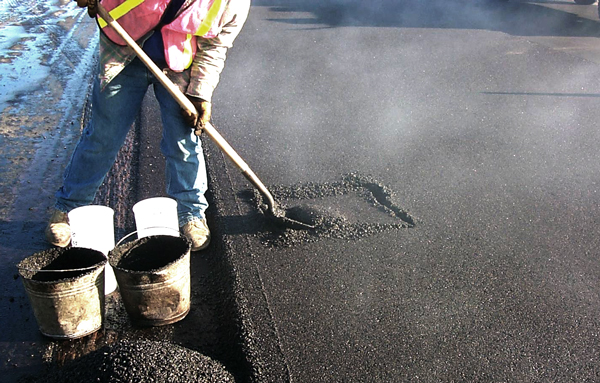Transform Your Residential property's Landscape with Hot Mix Asphalt Paving Quality
Wiki Article
Unlocking the Tricks of Hot Mix Asphalt Innovation
Checking out the midsts of warm mix asphalt innovation discovers a world where precise procedures and specific solutions merge to form our roads and facilities. The fusion of binders, fillers, and aggregates isn't just a building and construction job however a tactical orchestration of sturdiness and effectiveness. As we peer into the complex dancing of components, a tapestry of resilience and sustainability unravels. Yet what lies below this surface area of asphaltic proficiency, and what tricks wait to be revealed in the realm of paving technologies?Importance of Warm Mix Asphalt
Hot Mix Asphalt plays a vital duty in modern-day framework growth due to its durability and cost-effectiveness. As the most typically used paving product for roads, freeways, and parking lots, Hot Mix Asphalt offers a range of benefits that add to its relevance in construction jobs.The resilience of Warm Mix Asphalt stems from its structure, which includes accumulations, binder, and filler materials that are meticulously chosen and mixed to satisfy particular efficiency requirements. On the whole, the value of Hot Mix Asphalt in facilities development can not be downplayed, as it continues to be a foundation of modern building practices.
Parts of Asphalt Mixes
The composition of asphalt blends consists of meticulously selected accumulations, binder, and filler products that are essential for attaining specific performance needs. Aggregates are the main component of asphalt mixes, providing stamina and security. The binder, normally asphalt or asphalt concrete, holds the accumulations with each other and gives adaptability and durability to the mix.The combination and proportion of these components play a significant role in identifying the high quality and performance of the asphalt mix. Engineers thoroughly create the mix to satisfy certain demands, thinking about aspects like web traffic volume, climate conditions, and sidewalk life-span. Appropriate choice and balancing of aggregates, binder, and fillers are essential for creating sturdy, durable asphalt sidewalks.
Mixing and Production Strategies

As soon as the accumulations are picked, the binder, usually asphalt concrete, is included to bind the products with each other. The binder's top quality and amount dramatically influence the mix's toughness, adaptability, and resistance to ecological aspects. Furthermore, fillers like hydrated lime or Portland concrete might be integrated to improve particular characteristics of the asphalt mix, such as its workability or dampness resistance.
Throughout production, the aggregates and binder are warmed, commonly in between 250-325 ° F(121-163 ° C ), to assist in mixing and ensure correct finish of the aggregates. The visit here mixing procedure needs to be complete to accomplish a homogeneous blend that promotes the preferred performance attributes of the asphalt. Different methods, such as batch blending or drum mixing, are utilized to achieve regular and top quality asphalt mixes for building jobs.
Variables Affecting Asphalt Performance
Aspects influencing asphalt performance incorporate a variety of variables that influence the toughness, longevity, and total high quality of asphalt pavements. One crucial factor is the quality of materials used in the asphalt mix. The type and source of accumulations, the binder quality, and the additives all play a considerable function in identifying the performance of the asphalt sidewalk. The gradation of aggregates is critical as it influences the mix's security, workability, and resistance to breaking and rutting.
Ecological problems additionally influence asphalt efficiency. Temperature level variations, moisture infiltration, and web traffic tons can all affect the structural stability of the sidewalk. Style considerations, such as pavement density and drain, are necessary in making sure the long-lasting performance of the asphalt pavement. By very carefully considering these elements, professionals and designers can optimize asphalt efficiency and improve the life span of pavements.
Sustainable Practices in Asphalt Innovation

Additionally, the development of warm-mix asphalt (WMA) modern technologies has actually gotten traction over the last few years. WMA permits the production and positioning of asphalt blends at lower temperature levels compared to traditional hot-mix asphalt, leading to decreased power intake and greenhouse gas emissions. In addition, using porous asphalt blends can help mitigate stormwater overflow issues by allowing water to penetrate through the pavement and right into the ground, advertising natural water purification and reenergize procedures. By implementing these lasting practices, the asphalt market can add to constructing a much more resilient and eco friendly framework network.
Final Thought
To conclude, warm mix asphalt technology plays a vital duty in modern-day infrastructure development due to its sturdiness and cost-effectiveness. By meticulously stabilizing elements, utilizing appropriate blending methods, and thinking about different aspects, designers can produce top notch asphalt blends that stand up to rush hour tons and severe climate condition. Accepting sustainable practices, such as using recycled products and warm-mix modern technologies, even more improves the environmental kindness of asphalt modern technology.
Mixing and production strategies in warm mix asphalt technology involve the specific mix and handling of aggregates, binder, and fillers to develop a durable and high-performance asphalt mix.Elements influencing asphalt performance include a variety of variables that influence the resilience, durability, and overall high quality of asphalt pavements. Sustainable practices in asphalt technology incorporate various campaigns aimed at reducing the ecological effect of asphalt manufacturing and paving processes. By incorporating recovered asphalt pavement (RAP) and recycled asphalt roof shingles (RAS) into brand-new asphalt mixes, the market can considerably lower the usage of raw check out this site products and energy, while also lowering landfill waste.
WMA enables for the production and placement of asphalt blends at lower temperature levels compared to standard hot-mix asphalt, resulting in reduced energy intake and greenhouse gas emissions.
Report this wiki page